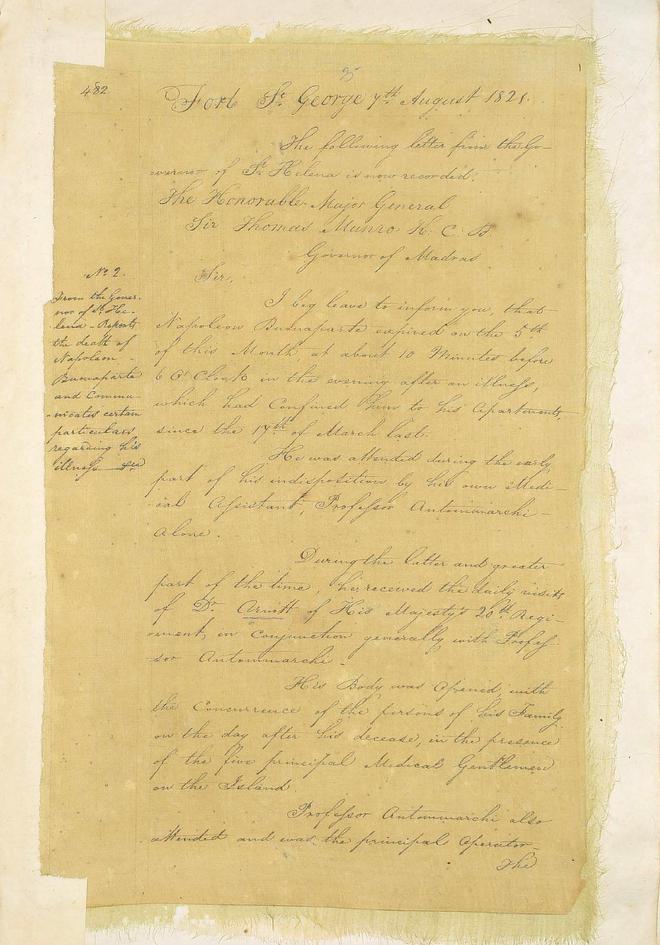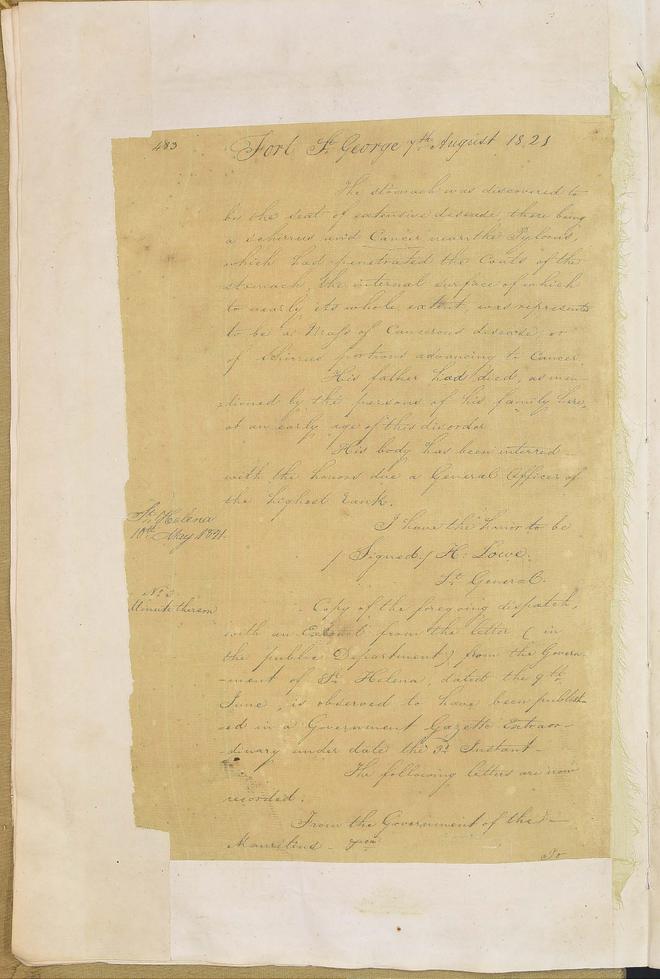
As a major seat of power for the British during the colonial period, Madras occasionally got entangled in the conflicts between European powers.
Madras had been a theatre in the many Anglo-French wars of the 18th Century. It might have even become a theatre of the Napoleonic wars, had Tipu Sultan, the Sultan of Mysore, succeeded in his attempts to forge an alliance with the French Emperor to defeat the British in India.
Wellesley’s role in defeat
Incidentally, it was Arthur Wellesley, who later became the Prime Minister of the United Kingdom, played a key role as one of the commanders of the armies that defeated both Tipu, in the Fourth Anglo-Mysore War in 1799, and Napoleon Bonaparte, in the Battle of Waterloo in 1815.
Interestingly, six years later, when Napoleon died on May 5, 1821, on Saint Helena, where he was in exile, Madras would receive a letter informing his death. An extract from the fairly detailed letter, dated May 10, 1821, has been preserved in the Tamil Nadu Archives and Historical Research, Chennai.
According to some accounts, Madras might have become intertwined with the life of Napoleon (whose birth anniversary fell on August 15) since it was considered a location for the Emperor’s exile after Waterloo by Arthur Wellesley. But it was ruled out, perhaps, owing to the city’s proximity to the then French territory of Pondicherry.
Possessions of Napoleon
Napoleon was instead sent to the remote Saint Helena in the South Atlantic Ocean, which was then under the control of the East India Company, like Madras. On the island, among the possessions listed under “Body Linen” in Napoleon’s will were “6 madras”, and “6 handkerchiefs”, of which at least one was made of a red madras, indicating the popularity of the chequered cotton fabric that originated in the city.
The letter, written by Hudson Lowe, the then Governor of Saint Helena, says Napoleon expired “at about 10 minutes before 6’ o’clock in the evening after an illness, which had confined him to his apartment since the 17th of March last”.
Autopsy details
It goes on to detail the autopsy done by Napoleon’s physician François Carlo Antommarchi, which reportedly revealed, “a schirrus [sic] and cancer near the pylorus which had penetrated the coats of the stomach, the internal surface of which to nearly its whole extent, was represented to be a mass of cancerous disease...” “His body has been interred with the honours due to a General Officer of the highest rank,” the letter adds.
With the Battle of Waterloo, the Anglo-French Wars had ended and hence there was no apparent strategic necessity for Napoleon’s death to be formally communicated to Madras in 1821. The reason for the letter perhaps had something to do with the person to whom it was addressed — Sir Thomas Munro, the then Governor of Madras, whose impressive equestrian statue stands tall on Anna Salai. Munro, who was then a popular administrator known for the reforms he introduced in revenue system, possibly had a special interest in Napoleon.
Saint Helena acted as a point of support for the British ships on the way to India. According to the book, Life of Sir Thomas Munro, by G.R. Gleig, published in 1849, Munro sailed from Madras to England in January 1819 before he became the Governor of Madras in 1820. En route, the vessel had a halt at the island for a few days.
Admiration and pity
“General Munro was enabled to gratify a wish which he had long entertained. He traversed the rock from end to end, visiting every spot to which the presence of Napoleon had given an interest; and left it more than ever impressed with mingled admiration and pity for that great, misguided, and ill-fated man,” the author says. Napoleon was staying at Longwood House on the island at that time. He died two years after Munro’s visit.
Munro’s interest in Napoleon grew stronger, perhaps, because the former, who also fought Tipu, was involved in strategising against the possibility of a French invasion of the Malabar coast when Napoleon was in Egypt in 1798. The book, Sir Thomas Munro and the British Settlement of the Madras Presidency, written by John Bradshaw in 1906, gives an account of the military suggestions made by Munro regarding the contingency of a French invasion.
Remains removed
It was this interest and an acquaintance Munro possibly developed with Lowe that resulted in the letter being sent to him. Like Napoleon, Munro died away from home due to illness. He died on July 6, 1827, due to cholera, while camping at Pattikonda in Kurnool district of Andhra Pradesh. While Munro was buried in nearby Gooty, his remains were removed to Madras and interred in front of the Governor’s pew at St. Mary’s Church at Fort St. George in 1831, just like how Napoleon’s remains were removed from Saint Helena to Paris in 1840.








